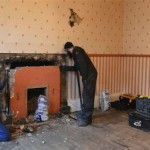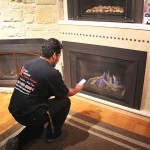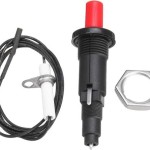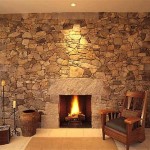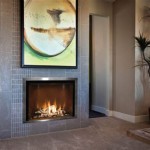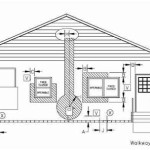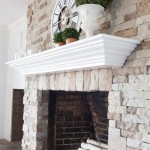Understanding the Parts of a Gas Fireplace: A Diagrammatic Guide
Gas fireplaces offer warmth and ambiance while providing a convenient alternative to traditional wood-burning fireplaces. Their operation relies on a complex interplay of various components, each serving a specific function. Understanding these parts and their relationships is vital for maintenance, troubleshooting, and ensuring safe operation. This article dissects a typical gas fireplace, examining its key components through a diagrammatic lens.
Visualizing the components through a diagram provides a clear understanding of their spatial relationships and functional dependencies. A typical gas fireplace diagram will depict the gas supply line, control valve, burner assembly, pilot light assembly, thermocouple/thermopile, venting system, and the surrounding decorative elements like logs and glass.
Key Components of a Gas Fireplace
The diagram allows us to identify and understand the crucial elements within the gas fireplace system. Described below are the primary components typically found in a gas fireplace diagram:
Gas Supply Line: The gas supply line is the essential conduit that delivers natural gas or propane to the fireplace. Typically constructed from rigid or flexible metal piping, it connects the fireplace to the building's gas infrastructure. A shut-off valve is strategically placed along this line, allowing for complete gas isolation during maintenance or emergencies. The diagram highlights its connection point to the gas control valve within the fireplace.
Gas Control Valve: This valve acts as the central command center for the fireplace. It regulates the gas flow to the burner assembly and pilot light assembly. The control valve is often equipped with safety features, such as a flame failure device that automatically shuts off the gas supply if the pilot light is extinguished. Diagrammatically, it's crucial to note the connections to the gas supply, pilot light, and burner, as well as any electrical connections for remote control features.
Burner Assembly: The burner assembly is where the gas is combusted to produce the fireplace's flames and heat. It consists of a burner tube or pan with precisely engineered ports or slots that distribute the gas for even burning. The design of the burner assembly influences the appearance and intensity of the flames. A diagram reveals the specific configuration of the burner, the material it's made from (typically cast iron or stainless steel), and its relationship to the fake logs or decorative media.
Pilot Light Assembly: This assembly provides a small, continuous flame that ignites the main burner when the fireplace is activated. The pilot light assembly consists of a pilot burner, a gas orifice, and often a thermocouple or thermopile. The diagram showcases the precise positioning of the pilot light relative to the burner and the thermocouple/thermopile, which is crucial for its function.
Thermocouple/Thermopile: The thermocouple or thermopile is a safety device that monitors the pilot light flame. A thermocouple generates a small electrical current when heated by the pilot flame, which keeps the gas control valve open. A thermopile generates a larger current, often used to power electronic ignition systems or remote controls. If the pilot light goes out, the thermocouple or thermopile cools down, the current drops, and the gas control valve shuts off the gas supply. The diagram emphasizes the physical connection between the thermocouple/thermopile and the gas control valve.
Ignition System: The ignition system is used to initially light the pilot light. Older models often use a manual piezo igniter, which creates a spark when a button is pressed. Newer models may feature electronic ignition systems that automatically spark the pilot light. The diagram illustrates the spark igniter's placement relative to the pilot light burner.
Venting System: The venting system safely removes the exhaust gases produced by combustion from the fireplace. There are two primary types of venting systems: direct vent and B-vent. Direct vent systems draw combustion air from outside the building and exhaust the gases directly outside through a sealed system. B-vent systems use room air for combustion and vent the exhaust gases through a chimney. The diagram highlights the type of venting system used and its proper connection to the fireplace and the exterior of the building.
Decorative Logs/Media: These elements are primarily aesthetic, designed to resemble real wood or other decorative materials such as glass beads or stones. While visually appealing, they also play a role in distributing heat and creating a realistic flame pattern. The diagram shows their arrangement around the burner assembly, demonstrating how they interact with the flames.
Understanding Venting Systems
The venting system is a critical safety component, and understanding its design is paramount. Gas fireplaces are typically classified as either direct vent or B-vent, each system having distinct characteristics.
Direct Vent Systems: As mentioned, direct vent systems are sealed, meaning they draw combustion air from outside and exhaust gases directly outside. This design minimizes the risk of carbon monoxide entering the living space. The diagram clearly shows the concentric or coaxial venting pipes, with one pipe bringing in fresh air and the other expelling exhaust gases. Direct vent systems are more versatile in terms of installation options, as they can be vented horizontally through a wall or vertically through the roof.
B-Vent Systems: B-vent systems utilize room air for combustion and vent exhaust gases through a chimney. These systems are less efficient than direct vent systems and require a properly functioning chimney to ensure safe operation. The diagram illustrates the connection of the fireplace to the existing chimney and the importance of proper chimney height and diameter for adequate draft.
The Role of Safety Features
Gas fireplaces incorporate numerous safety features to prevent accidents and ensure safe operation. These features are crucial for safeguarding the occupants of the building.
Flame Failure Device: The flame failure device, typically a thermocouple or thermopile, is a critical safety component that continuously monitors the pilot light flame. If the pilot light is extinguished, this device automatically shuts off the gas supply to prevent the buildup of unburned gas. The diagram clearly depicts the thermocouple/thermopile's connection to the gas control valve and its proximity to the pilot light.
Pressure Regulator: The pressure regulator maintains a constant gas pressure to the burner, ensuring consistent flame height and heat output. Fluctuations in gas pressure can lead to unstable flames, inefficient combustion, or even dangerous conditions. The diagram demonstrates its placement in the gas supply line, typically integrated within the gas control valve.
Overpressure Relief Valve: In the event of excessive gas pressure, the overpressure relief valve will automatically vent the gas to prevent damage to the fireplace and gas piping. This valve is typically located on the gas control valve. The diagram highlights its location and its function as a fail-safe mechanism.
By studying a detailed diagram of a gas fireplace, one can gain a thorough understanding of its components, their functions, and their interrelationships. This knowledge is invaluable for homeowners, technicians, and anyone involved in the installation, maintenance, or repair of gas fireplaces.

Gas Fireplace Natural Bdm35 The Cozy Cabin Lennox Hearth Parts

Unvented Decorative Gas Fireplace Cfpf Cmp The Cozy Cabin Lennox Hearth Parts

G2000 The Cozy Cabin Stove Fireplace Parts

A Plus Inc Superior B500 Replacement Parts Accessories

Gbu36 Natural Vent Gas Fireplace 232 234 Vermontcastings Parts For Vermont Castings Majestic

Grandview Natural Gas Fireplace G800ec Ng Cozy Cabin Regency Parts

Gas Fireplace Vermontcastings Parts For Vermont Castings Majestic

Napoleon Parts

Parts Of A Gas Fireplace Explained With Real Examples

Cgcftn Fireplace Parts For Desa Comfortglow Partsfor Com
Related Posts

